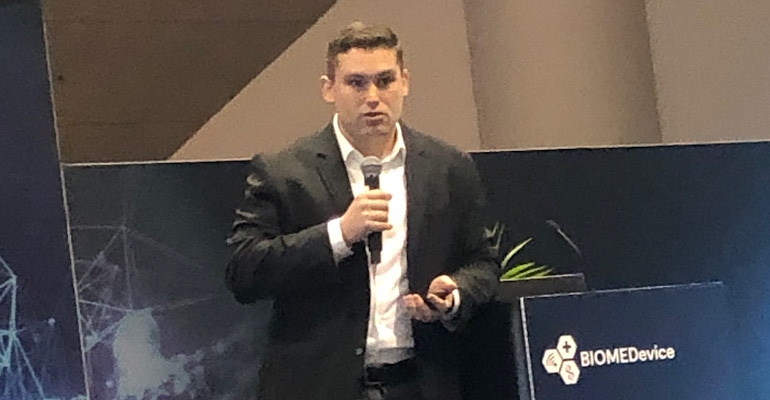The Future of Healthcare Is Connected & Data-Driven
Erez Kaminski, CEO & Founder of Ketryx, spoke about the reality of developing cloud-based software in a changing regulatory environment.
November 30, 2022

SANTA CLARA, CA - The opening keynote for BIOMEDevice Silicon Valley was well-attended and the topic was indeed a concerning – Developing Cloud-Based Software in a Changing Regulatory Environment.
Erez Kaminski, CEO and founder of Ketryx, a company that creates software development tools for regulated industries, delivered the opening keynote and challenged the audience to think about the combination of software and medical devices.
Creating safety-critical artificial intelligence and machine learning (AI/ML) applications in the face of changing FDA regulations is a prominent challenge facing manufacturers and regulators. While AI/ML promises to provide newer, smarter solutions for software in medical devices and biotechnology applications, its statistical nature presents challenges from a safety and validation perspective and requires subject matter expertise and purpose-built solutions to comply with FDA regulations.
New approaches to software development and understanding upcoming changes with FDA, including precertification, can improve a team's chances of building a successful, safe product that improves patient care and healthcare outcomes.
“Healthcare is going to be connected and data-driven,” he told the audience. There are many reasons as to why that is going to occur – because first of all every other industry is going in that direction and healthcare is following suit. The second and probably the most important reason is that the growth in the population outmatches the growth in the providers we can train.”
The addition of software to medical devices is a new aspect the industry must contend with.
“Medical devices, traditionally from a software perspective, have the minimal amount of software they can have on them, and that software was not connected to anything. It was not changed often and that comes into stark contrast to what’s about to happen in this industry and what’s already unfolding.”
Kaminski said to get a better understanding of the integration of software with medical devices, that the industry must understand “change is the only constant.”
“The reason that I’m stating that is because change management for folks here that have done a lot of that work, makes it very difficult to practically change software and software that has been changed repeatedly – for example, all data-driven software; all machine learning software; all software that takes things from the real world needs to update something in it has to get changed all the time.”
He added, “You cannot use data without thinking the product is going to change. Data at its core changes all the time. Models need to be retrained routinely and that doesn’t mean automatically trained in a way that’s not allowed in the U.S. but I mean trained by your staff and then deployed.”
The common pain points encountered during FDA-grade software development include expensive costs, system complexity, and slow development. To counter these obstacles, Kaminski shared the best practices for integrating Open Source Software, cloud, and machine learning into safety-critical products and explained how to leverage existing technologies to remain compliant with FDA and be approved for precertification.
“There’s a lot of work to be done and there’s a lot of things to want for in medical software,” Kaminski told the audience. “It’s not where you would expect medical software to be in 2022. Connecting to devices is hard. Updating is hard. Everything around it is very difficult.”
About the Author(s)
You May Also Like



.png?width=300&auto=webp&quality=80&disable=upscale)
